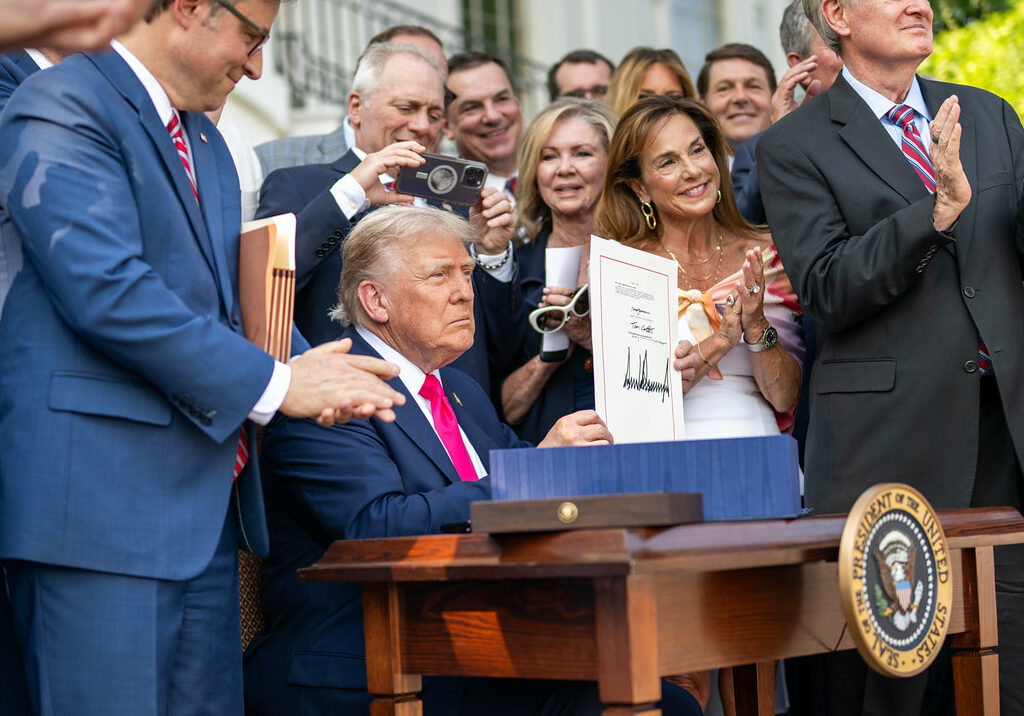The White House has told Republican lawmakers to get out there and start selling the “One Big Beautiful Bill” as chock-full of family-friendly “expansions.” Having passed a slight increase in the amount of the Child Tax Credit and modest changes to federal child care supports, they will cast themselves as champions for American families. However, when considered against the rest of the bill, these changes actually shrink the spending power of many families.
Take the changes to the Child Tax Credit. In 2021, the American Rescue Plan temporarily raised the maximum credit to $3,600 per child. Families received monthly payments, and — critically — parents with little or no earnings were eligible for the full benefit. Child poverty dropped by almost half.
The One Big Beautiful Bill also increases the maximum Child Tax Credit. By $200. The new maximum credit — which comes in at $2,200 per child — remains out of reach for 19 million American kids, the same ones whose parents make too little to qualify. That means a child whose parent had to take off work to care for a loved one, or to welcome another child, or who lost their job because of a natural disaster or a typical job layoff, won’t benefit from this increase. The kids who need the money the most will get the least.
It’s not as if Republicans lacked the legislative imagination to address this; they know how to get Child Tax Credit payments to the most significant number of kids. In fact, bipartisan legislation doing just that passed the Republican-controlled House of Representatives in 2024 with more Democratic than Republican votes. Notably, JD Vance, then the junior senator from Ohio who was promising a $5,000 per child Child Tax Credit if he became vice president, skipped the vote.
This time, Republicans opted to deny the full credit to lower-income children. Instead, they boasted about raising the amount. However, they omitted the fact that the $200 increase is easily offset by inflation. Supporters note that the legislation allows the credit to rise with inflation for the first time, and, on paper, that’s an improvement. However, Republicans intentionally chose to measure inflation using “chained CPI,” which assumes families switch to cheaper goods when prices rise. Chained CPI grows more slowly than actual household costs, so the credit will always lag behind the actual cost of raising children.
Child care funding gets a modest boost in this bill, but it is the same one-step-forward, two-steps-back approach as the Child Tax Credit. Providers receive more support, and subsidies increase slightly. These steps barely dent a system plagued by long waitlists, costs that rival college tuition, and significant workforce shortages that drive up those costs. Changes to student loan policy in the legislation make it less likely that college students will pursue early childhood education, which will only exacerbate the workforce shortages.
Of course, none of these changes is made in isolation. They are accompanied by the biggest cuts in history to the Supplemental Nutrition Assistance Program and Medicaid. SNAP, the nation’s most significant anti-hunger program and the first line of defense against childhood hunger, serves 14 million children nationwide. Every single SNAP household in America will feel the effects of the program’s cost shift to the states.
The One Big Beautiful Bill also slashes Medicaid and CHIP, programs that serve 37 million children. The nonpartisan Congressional Budget Office estimates the bill will cause at least 10 million Americans to lose their health insurance, including children, and force the closure of rural hospitals.
All of these changes were made, of course, to deliver another round of enormous tax cuts that disproportionately benefit the ultra-wealthy. That’s why calling anything in this big bill an “expansion” is highly misleading: the Child Tax Credit continues to leave behind the children who need it the most, and the new child care supports are offset by increased costs that are a direct result of the same legislation.
The experience of 2021 showed what a true Child Tax Credit expansion looks like: a monthly credit, available to all children regardless of parental income, that lifted millions of children above the poverty line, along with an expanded Child and Dependent Care Tax Credit that went directly to families. This big, ugly bill falls far short and only sets working families further behind.


